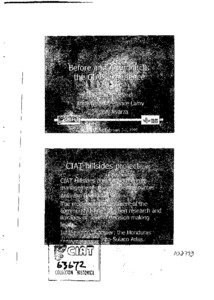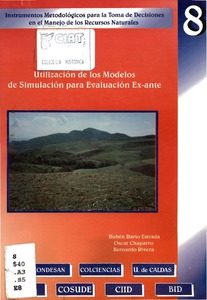Mission
To reduce hunger and poverty, and improve human nutrition in the tropics through research aimed at increasing the eco-efficiency of agriculture.
People
CIAT’s staff includes about 200 scientists. Supported by a wide array of donors, the Center collaborates with hundreds of partners to conduct high-quality research and translate the results into development impact. A Board of Trustees provides oversight of CIAT’s research and financial management.
Values
- Shared organizational ethic
- We respect each other, our partners, and the people who benefit from our work. We act with honesty, integrity, transparency, and environmental responsibility in all of our joint endeavors.
- Learning through partnerships
- We work efficiently and pragmatically together and with partners. Considering our diversity to be a key asset, we adapt readily to change and strive to improve our performance through continuous learning.
- Innovation for impact
- We develop innovative solutions to important challenges in tropical agriculture, resulting in major benefits for the people who support, participate in, and profit from our work.
Members:
Resources
Displaying 541 - 545 of 958Soil organic carbon, carbohydrates, amino sugars, and potentially mineralizable nitrogen under different land-use systems in oxisols of the Brazilian cerrados
Intensive farming and grazing on Oxisols of the Brazilian savannas (also known as the Cerrados) are leading to loss of soil organic matter (SOM) and consequently to a decline in fertility and sustainability of the soils. Alternative land-use systems such as the introduction of legumes in pastures and the use of no-tillage systems can reverse this process.
The contribution of RADARSAT-1 SAR imagery to monitor land use in coastal areas of Costa Rica and Nicaragua
Tools for disaster mitigation workshop : Before and after Mitch: The CIAT experience
Utilización de modelos de simulación para evaluación ex-ante
Using GIS techniques to aid in predicting a plant virus in beans
Geographical information systems (GIS) assist us in mapping and analyzing outbreaks of diseases in plants, animals and humans. This paper describes how GIS are being used to model the intensity of the outbreak of a plant virus, bean golden mosaic virus (BGMV) in Guatemala, Honduras and El Salvador. BGMV is a geminivirus affecting beans (Phaseolus vulgaris) and is transmitted by a vector, the sweet potato whitefly (Bemisia tabaci). Once a plant is infected by the virus yield losses, at varying locations, can range from 40% to 100%.





